Window Cleaning 101 serves as your practical guide to achieving sparkling clean windows. From the humble abode to the towering glass skyscraper, windows are an integral part of the architecture that allows natural light to permeate and provide a view of the world outside.
Yet, despite their importance, windows often fall victim to dust and grime, becoming a visual mar on an otherwise clean space. To mitigate this, implementing regular window cleaning is crucial – and not as daunting as one might expect.
This guide provides in-depth insight into the necessary tools and equipment required, be it for a primary cleaning or removing stubborn stains. However, window cleaning doesn’t come without its risks. Therefore, understanding and following safety precautions are of paramount importance to prevent workplace accidents, or damage to your property.
Mastering various techniques and methods for different types of windows, from the traditional to the modern, is also essential. After all, an improper approach can result in scratches and even breakage. Alongside the pane itself, window frames, sills, screens, blinds, and shades also need due attention. These intricate parts, often overlooked, can accumulate dust and require specific cleaning methods.
Lastly, cleaning exterior windows, particularly for high-rise buildings, poses its own challenges. How can you ensure a high-quality clean while maintaining safety? This guide explores all aspects of window cleaning to help you keep your windows clear and glistening, safeguarding your view and brightening your space, whether it be your home or workplace. Buckle up as we dig into the sparkling world – Window Cleaning 101.
Tools and Equipment
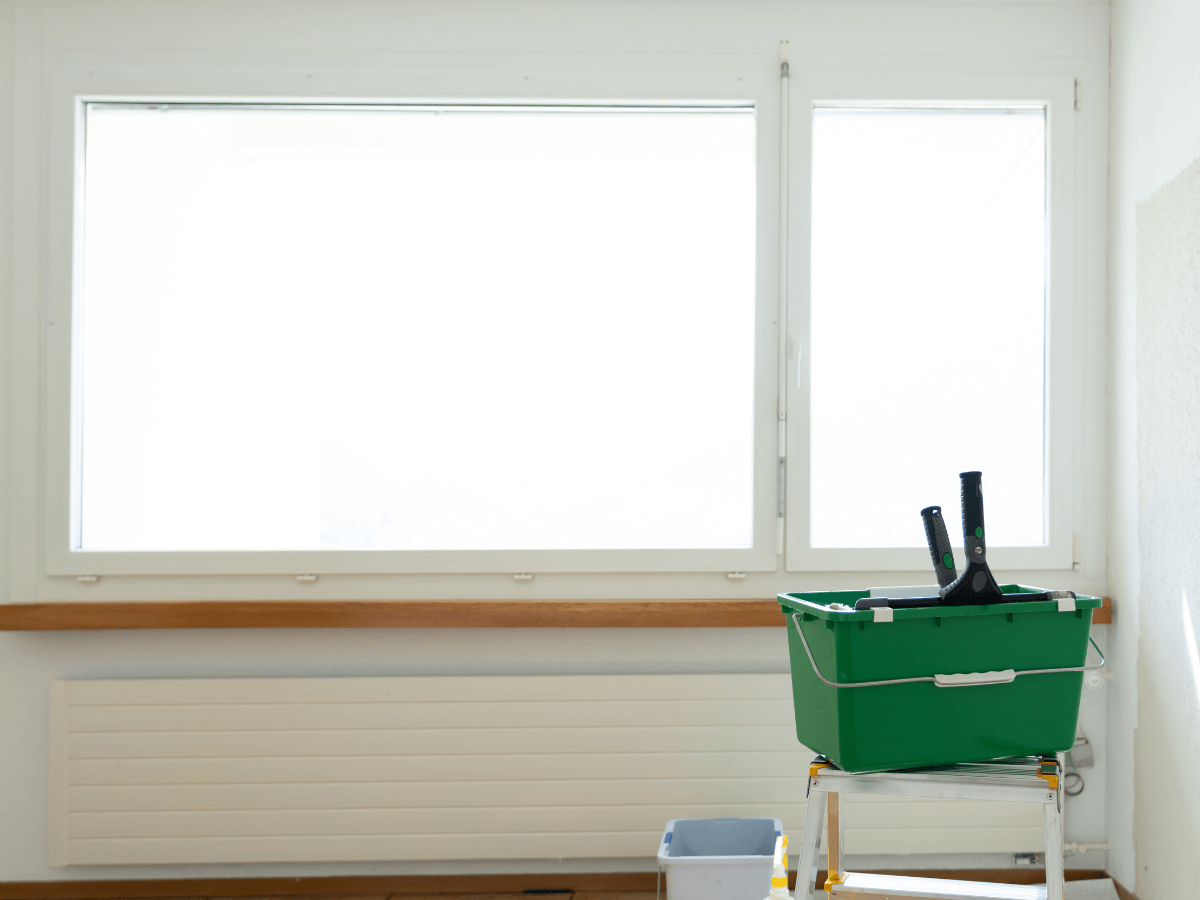
When considering the task of window cleaning, whether it’s for a small residence or a multi-story commercial building, it’s not simply a matter of soap and water; having the right tools and equipment can make the job not only easier but also more efficient and safe.
The toolkit of a professional window cleaner extends beyond the simple squeegee, although this tool is pivotal in achieving the glistening, streak-free finish we desire on our windows.
A sturdy and efficient collection of window cleaning equipment often consists of window scrubbers, which are an essential component for an initial thorough cleaning. These are used to scrub off dust, bird droppings, and other stubborn detritus before the application of cleaning solutions and the squeegee.
Next in the toolkit fall the all-important ladders and extension poles, these tools promote practicality and safety, allowing window cleaners to reach high or awkward spots with ease. It can’t be overstated how critically important proper safety precautions are in this profession, with tools like these being instrumental in ensuring that jobs are carried out effectively.
Let us not forget the buckets and cleaning solutions. The right cleaning solution can cut through grit and grime without leaving residue, while the buckets are accessible storage for your cleaning solution during the cleaning process.
Lastly, to achieve a polished finish, the use of microfiber cloths and towels is vital. They are excellent for buffing out spots and streaks that may have been left behind, enabling those clean, crystal-clear windows that sparkle in the sunlight.
This comprehensive collection of tools and equipment forms the backbone of professional window cleaning, making the job safer, and easier, and yielding better results. Read Window Cleaning Tools and Equipment 101 to get an even clearer picture.
Safety Precautions

Window cleaning is a crucial task that necessitates meticulous attention, not just to achieve a sparkling result, but also to ensure safety measures are not compromised. Generally, window cleaning might entail scaling considerable heights using ladders and other climbing devices, therefore, understanding and ensuring the proper use of ladders is paramount.
This would include ensuring the ladder is positioned on a solid and level surface, extending it properly before ascending, and never overextending beyond the safe reach distance for cleaning. The issue of working at heights goes hand in hand with the use of ladders.
It’s advisable to receive the necessary training and adhere to safety regulations like maintaining three points of contact on the ladder and never working on windows in extremely windy conditions.
Moreover, the usage of the right protective gear cannot be understated. This involves wearing a hard hat to protect against falling debris, safety goggles to protect the eyes, gloves for hand safety, and harnesses when needed for added security.
Furthermore, window cleaning typically involves the use of various cleaning chemicals. Proper handling of these chemicals is essential to prevent harmful exposure. This should include following manufacturer instructions for usage and storage, always using gloves when handling chemicals, and ensuring adequate ventilation in the work area.
Thus, taking these safety precautions would not only protect the cleaner but also significantly enhance efficiency and quality outcomes in window cleaning processes.
Techniques and Methods
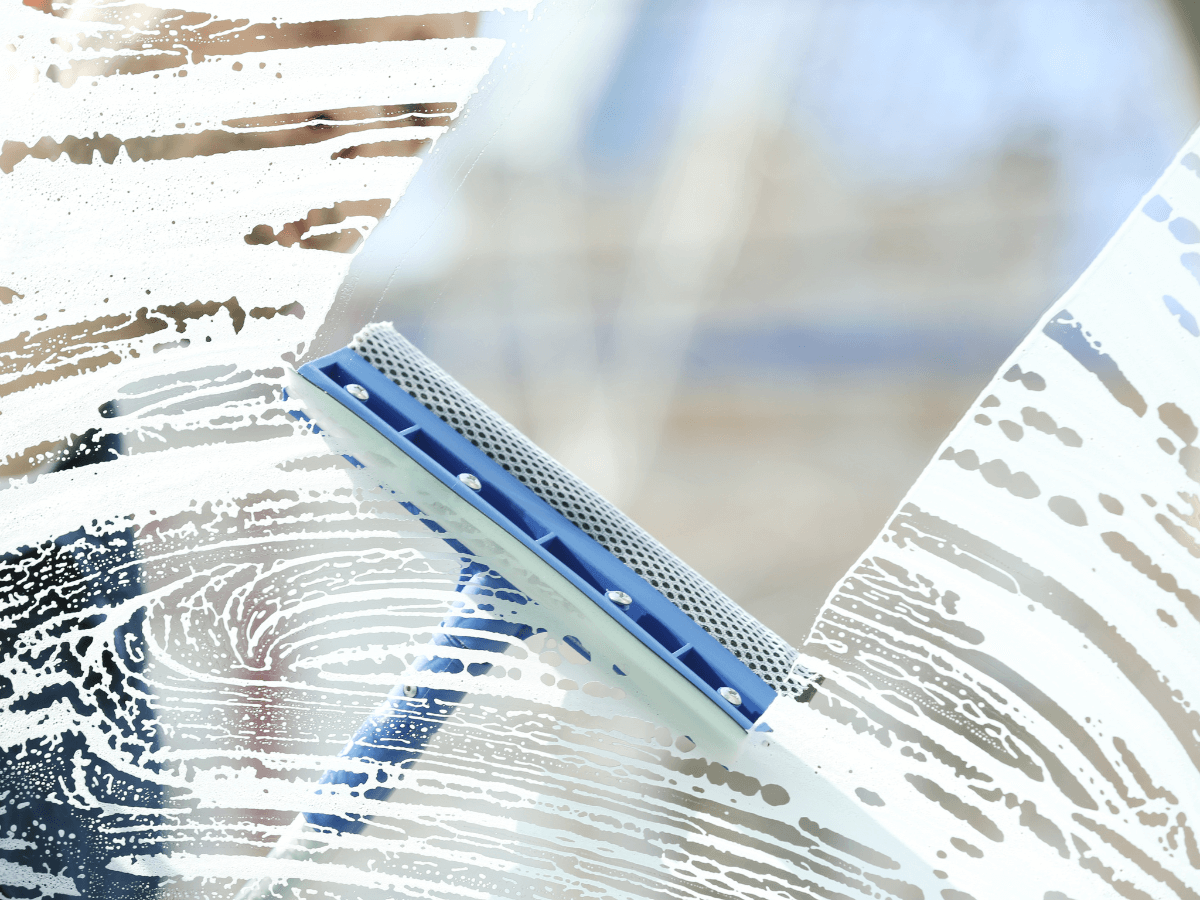
Window cleaning is often considered a mundane chore, but it requires specific techniques and methods to ensure a streak-free and impeccable finish. The traditional window cleaning method consists of using a squeegee, a scrubber, and a detergent solution.
This highly effective method involves wetting the window with the solution using the scrubber, and then removing the water and dirt with the squeegee, leading to sparkling windows. However, when cleaning windows located at high levels, the water-fed pole system is commonly used by professionals.
This system uses a telescopic pole, where water is fed through the pole and sprayed out through a brush head onto the window. The water used is usually purified, therefore when it dries, it does not leave any residues or streaks.
Also for tough dirt and stains, high-pressure washing can be quite fruitful. These machines, which spray water at high velocity, are proficient at removing grime, dust, and also spiderwebs. Care must be taken while using this method though, as the high pressure can potentially damage the windows.
Lastly, DIY window cleaning solutions have also become popular due to their cost-effectiveness and ease of preparation. A common one is a mixture of equal parts white vinegar and water. This works particularly well in breaking down dirt and grime, leaving the windows shining.
So, irrespective of the method used for cleaning windows, the goal remains the same- clear, gleaming windows that significantly enhance the aesthetic appeal of not only the window itself but the whole decór.
Cleaning Different Types of Windows

Cleaning windows is essential for maintaining a clear view and overall aesthetic appeal of your property. However, the approach to washing may vary based on the type of window.
Single-hung windows, for instance, require cleanup on both sides. You can clean the interior from inside the house and for the exterior, you would need a sturdy, high ladder to reach the outside surface. Double-hung windows, on the other hand, are more convenient as both lower and upper sashes can be lowered or raised, allowing you to clean both sides from inside the house.
When it comes to casement windows, you need to open them fully to clean the inner and outer surfaces. Be cautious not to apply excessive pressure as it can damage the casement arm. Sliding windows can be thoroughly cleaned by sliding the panel to the center and then wiping it down from top to bottom.
Bay and bow windows bring a sophisticated aesthetic to homes but can be challenging to clean due to their unique structure. Carefully using a step ladder, you can clean each pane one by one.
Finally, skylights are positioned high and at an angle, therefore specialized equipment like long-reach tools or occasionally professional help might be required for proper cleaning.
Regardless of the type of window, it’s essential to use window cleaning tools and solutions and not forget to clean the window sills and frames. The right approach can help ensure different types of windows remain clear and sparkling for a longer time.
Cleaning Window Frames and Sills
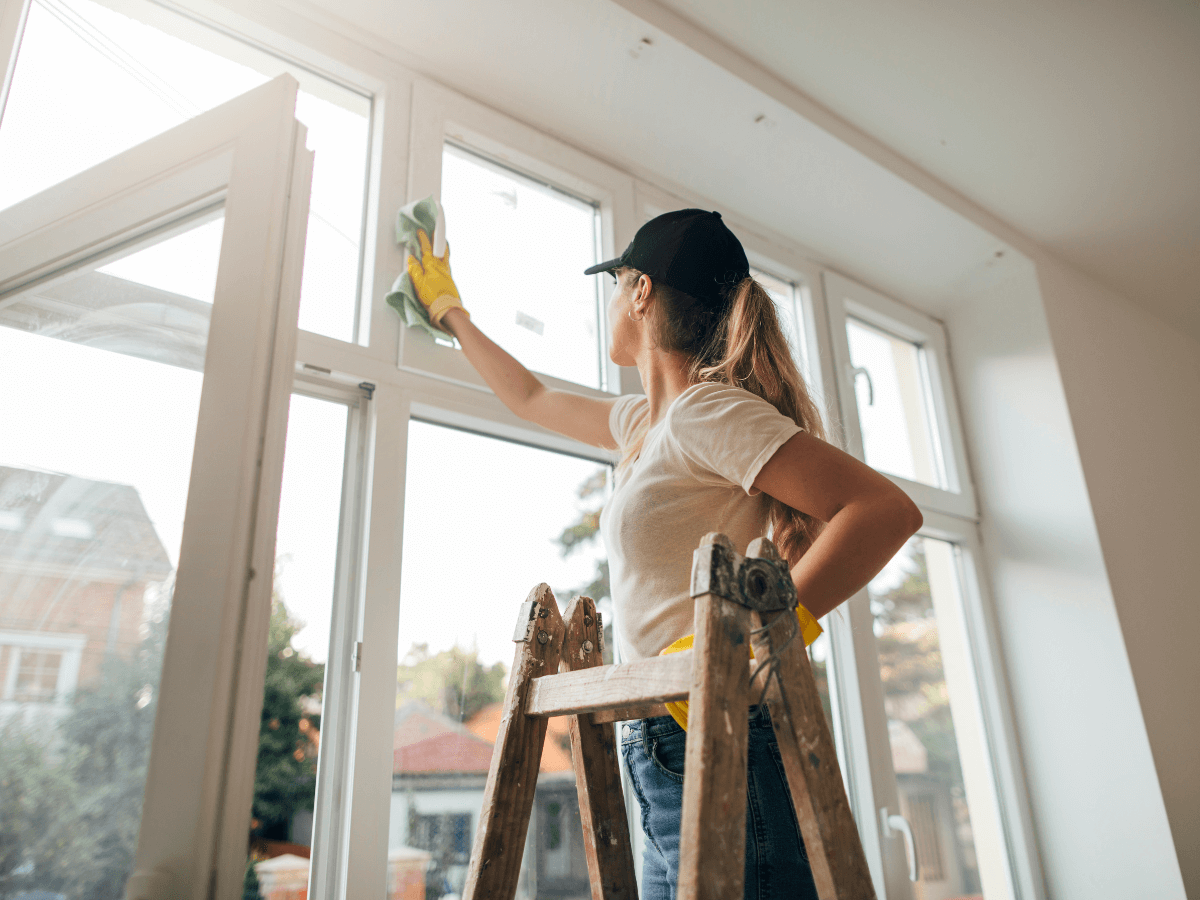
When it comes to maintaining the cleanliness and integrity of your home, one task that often goes unnoticed is cleaning window frames and sills. However, this is an essential chore that shouldn’t be overlooked, as dust and debris can accumulate over time, causing discoloration and even damage to your window structures.
The process of cleaning window frames and sills starts with removing dust and debris. Using a soft brush or a vacuum cleaner with a brush attachment, gently remove dust, cobwebs, and loose dirt from the surface. This is important to prevent scratches or damage when wiping down the frames in the next step.
Wiping down the frames can usually be done with a damp cloth or, for particularly stubborn stains or dirt, a mild detergent solution. Use a non-abrasive cloth or sponge to avoid scratching the frames. Make sure to dry them thoroughly afterward to prevent water stains or damage.
Cleaning window tracks is also part of this chore. These can often become gritty and dirty over time, especially in high-traffic or high-dirt areas. A narrow brush or a toothbrush can be an efficient tool for scraping out the debris. Afterward, wipe it out with a damp cloth and dry thoroughly to prevent mold or mildew formation.
By taking the time to regularly perform these tasks, you can ensure your window frames and sills always look their best, contribute to the overall cleanliness of your home, and extend the lifespan of your windows.
Cleaning Window Screens
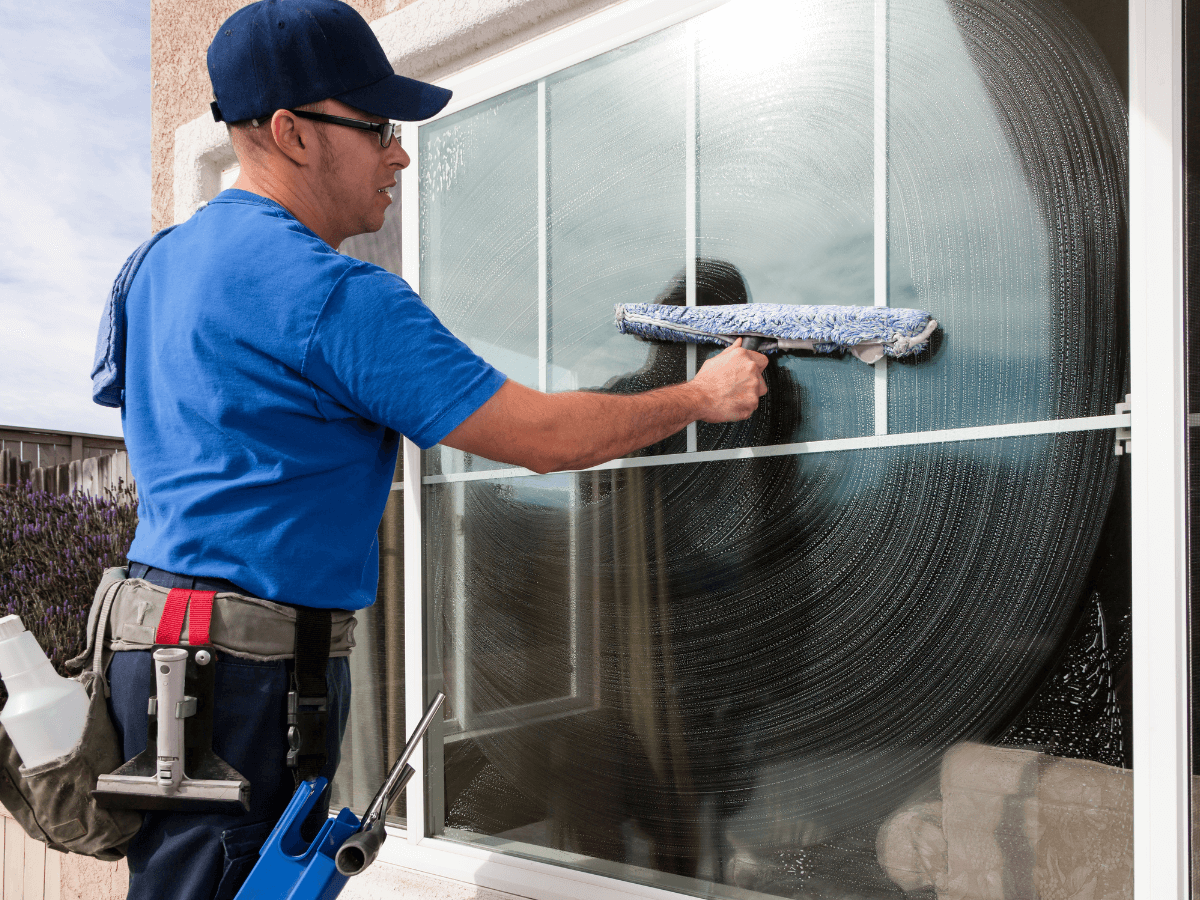
Cleaning window screens are an important aspect of home maintenance that is quite often overlooked. This process not only ensures that your view remains unobstructed but can also extend the lifespan of your screens. The first step is removing the screens from the windows.
This can typically be done by carefully lifting the screen frames out of their tracks, making sure not to bend or damage them. Once the screens are removed, the next step is brushing and vacuuming. Brushing is useful to loosen and remove large debris from the screens. A small brush like an old toothbrush would do the trick.
After brushing, vacuuming is recommended to pick up finer particles or accumulated dust that may be difficult to remove manually. This stage ensures that the next cleaning step is more effective.
Once the bulk of the dirt is vacuumed, the window screens can then be washed. Mild soapy water and a soft sponge are enough to clean off all remaining dirt and grime. It’s essential to let the screens dry completely, either naturally or by gently wiping them down, to prevent rusting or mildew growth.
The final step of this cleaning process is reinstalling the screens back into the windows. This must be done carefully to ensure that the screens sit properly in their frames and don’t end up damaged. By following these steps dutifully, one can maximize the efficiency as well as the lifespan of the window screens.
Cleaning Window Blinds and Shades
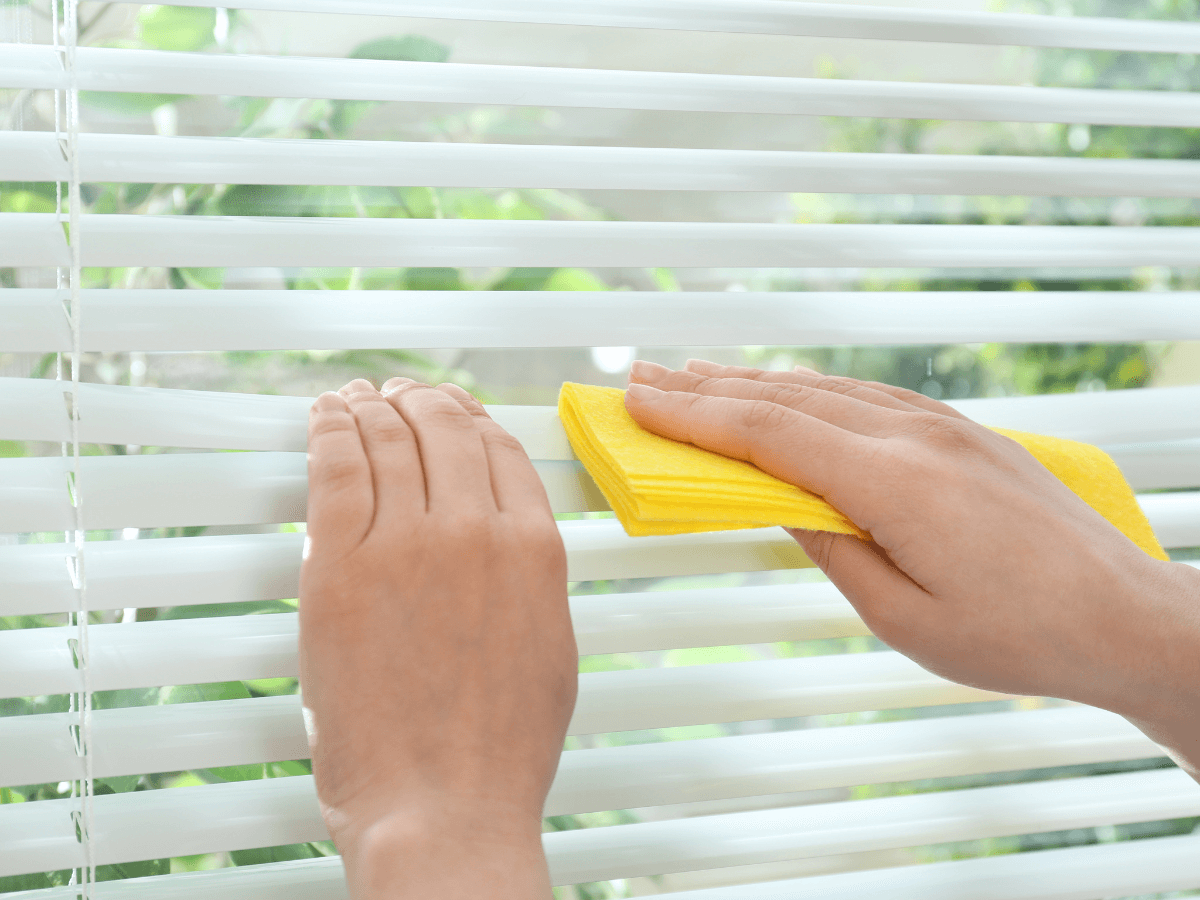
Cleaning window blinds and shades is a necessary chore that helps maintain the aesthetics and functionality of these home decor items. Over time, dust, grime, and stains can accumulate, causing them to lose their charm and elegance. To begin with, dusting is a basic yet effective method for removing loose dust particles from blinds and shades.
This task is typically performed using a duster or a microfiber cloth, and it is advised to start from the top and work downwards to minimize the dispersion of dust.
Vacuuming is another form of cleaning that is ideal for picking up any stubborn dust that clings onto the crevices and corners of blinds and shades. An upholstery attachment is applicable to most vacuums and can aid in a more in-depth clean.
Spot cleaning stains particularly target areas that have been tarnished by accidental spills or other similar incidents. For this method, a cloth dampened with a mild detergent solution is often used to gently blot the stain until it fades.
Lastly, deep cleaning methods consist of more thorough procedures such as soaking the blinds or shades in warm, soapy water or using specialized cleaning products. Items that require deep cleaning typically need to be disassembled and reassembled after the procedure.
Remember, each type of blind or shade may necessitate different cleaning techniques, so it is important to identify the material and follow the manufacturer’s recommendations for cleaning and maintenance. With proper care, window blinds and shades can remain clean, vibrant, and durable for an extended period.
Cleaning Exterior Windows
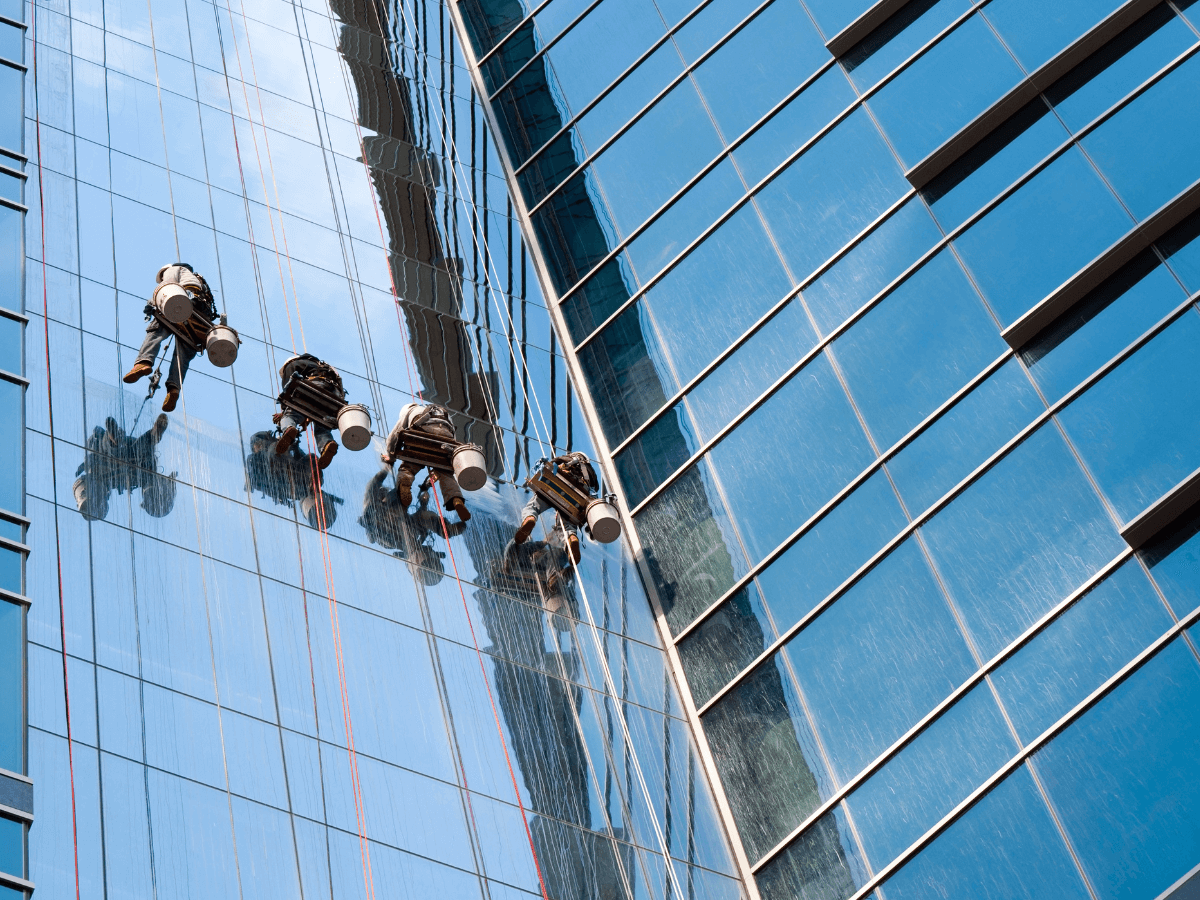
Cleaning exterior windows is an essential part of home maintenance that ensures both the aesthetic appeal and structural integrity of our homes. It involves a process that requires attention to detail and safety precautions to effectively remove dust, debris, and stains that accumulate over time.
Accessing exterior windows, especially those situated on higher stories, can be challenging. It often necessitates the use of ladders, scaffolding, or long-reach window cleaning tools. Safety should always be prioritized during this process.
Removing outdoor debris such as leaves, dirt, and bird droppings is the initial stage of the cleaning process. These deposits, if left unchecked, can cause permanent damage to the glass and window frames.
Another key aspect of exterior window cleaning is dealing with hard water stains. These are typically caused by minerals in rainwater, sprinkler systems, or window condensation and can become stubborn over time. Removing them might require specific cleaning solutions and a bit of elbow grease, but is crucial for maintaining the clarity and cleanliness of the window glass.
To prevent future build-up of dirt, dust, and hard water stains, it is highly recommended to clean your exterior windows regularly. Using a preventative measure such as a squeegee can assist in this matter by reducing water spots and streaks. A mixture of vinegar and water can also be employed as a cost-effective and eco-friendly cleaning solution.
Regular monitoring and routine cleaning will help to keep your exterior windows sparkling clean.
FAQs
Q: What is the best way for window cleaning?
A: The best way to clean windows is to use a professional window cleaning solution, a high-quality scraper, and an applicator, like the Ettore’s or Unger brands. The cleaning process involves applying the solution with the applicator and then using the scraper to remove dirt and residue. A final rinse and the use of a squeegee should leave your windows looking streak-free.
Q: What window cleaning supplies are essential for this task?
A: The necessary window cleaning supplies include a window cleaning solution, an applicator, a scraper, and a squeegee. Some people may also prefer to have a mop, a sponge, or a T-bar for large windows, and a bucket to mix the solution in and carry supplies. If you are dealing with high windows, an extension ladder or waterfed poles may be needed. Brands like Ettore, Wagtail, and Sorbo are often recommended by professional window cleaners.
Q: What cleaner do experts recommend for window cleaning?
A: Experts often recommend cleaning solutions specially designed for windows, such as those provided by brands like Ettore and Unger. These solutions are formulated to effectively remove dirt, lint, varnish, and other residues without leaving streaks or deposits. It’s also recommended to use warm water to help the cleaning solution suds and increase its cleaning power.
Q: What is the proper way to use a window cleaning solution?
A: Start by adding the right amount of window cleaning solution to a bucket. Fill the remainder with warm water to create the optimal cleaning mixture. Immerse your applicator or mop in the solution, letting it absorb a good amount of the mixture. Apply it to the window, starting from the top and working your way down to the bottom of the window. Use a scraper to remove the solution and the dirt, then rinse and squeeze off any remaining water to avoid streaks.
Q: How can I avoid streaky windows after cleaning?
A: To avoid streaky windows, you should start cleaning from the top and work your way down. This ensures that the cleaning solution and water drip downwards. After applying the cleaning solution and using the scraper, use a squeegee to remove the remaining water. Always wipe the squeegee after each pass to avoid creating water lines. If streaks still appear, a second clean may be required.
Q: Are there any safety precautions to consider during window cleaning?
A: Safety is crucial in window cleaning tasks. When using an extension ladder, always ensure it’s secure. Avoid leaning too far to the sides while on the ladder. Don’t forget to wear gloves when handling the cleaning solution as some can cause skin irritation. And if you’re dealing with exceptionally high windows, it might be safer to hire professional window cleaners to avoid any risk.
Q: Why do my windows never look as clean as when they are cleaned professionally?
A: Professional window cleaners have expertise, use high-quality window cleaning supplies, and know the best cleaning techniques. They often use systems like the pure water cleaning system, which helps remove all dirt and leaves the windows with a spectacular shine. Also, professionals use specific techniques such as sheeting and swivel squeegee work to avoid leaving streaks. If you follow the best practices with the right cleaning supplies, you can also achieve a very professional result.
Q: Can commercial window cleaning solutions damage my windows?
A: Commercial window cleaning solutions are generally safe for all types of windows if used correctly. These solutions are specifically designed to remove dirt and residues without ruining the glass. However, it’s always crucial to follow the manufacturer’s instructions for the best results. If your windows are very delicate or have special surface treatments, it may be best to consult a professional.
Q: Should I use a vacuum cleaner for window cleaning?
A: No, typically a vacuum cleaner is not used for window cleaning. Vacuum cleaners can be useful in removing dust from window sills or frames but aren’t suitable for cleaning the glass itself. Instead, use a window cleaning solution with a mop or applicator, and a scraper or squeegee to clean the glass. This process should remove all dirt and leave your windows streak-free.
Q: How regularly should window cleaning tasks be performed?
A: The frequency of window cleaning can vary based on different factors. For households, cleaning windows once every 2 to 3 months is adequate. However, commercial windows should be cleaned more frequently due to higher exposure to dirt. It’s advised to clean windows more often in the spring and fall when pollen, bird droppings, and insects tend to matter the glass. However, any time your windows appear streaky or reduced in clarity, it’s time for a clean.
Final Words
In conclusion, becoming proficient in window cleaning requires a solid understanding of the essentials, which we’ve detailed in our Window Cleaning 101 guide. To start, you’ll need to familiarize yourself with the right tools and equipment, which include items like squeegees, extension poles, microfiber cloths, and specialized cleaning solutions.
But it’s not just about having the right tools – safety precautions are equally important. Always ensure secure footing, use ladders safely, and be mindful of surrounding obstacles, power lines, and falling objects. The techniques and methods you use can significantly impact your results.
Different types of windows may require different cleaning tactics – casement windows, double-hung windows, and paned windows all have specific aspects that need attention. Don’t forget about cleaning window frames and sills, as neglecting these areas can lead to trapped dirt and pests.
Cleaning window screens is also key to maintaining optimal transparency and avoiding obscured views. Window blinds and shades, if present, also need regular cleaning to prevent dirt build-up and potential damage.
Lastly, cleaning exterior windows might seem intimidating due to its perceived risk and difficulty, but it’s necessary for complete window maintenance. With proper tools, safety measures, and techniques, you can effectively clean your windows inside and out, managing not just the glass, but also all the moving components, attachments, and surrounding areas.

